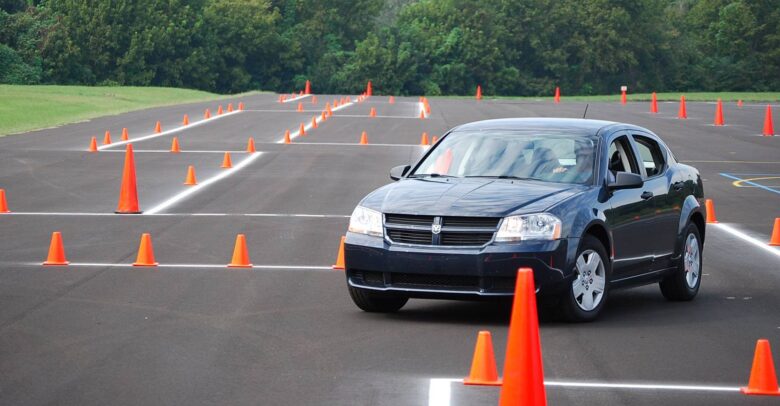Driving is one of those life-long skills everyone looks forward to growing up to gain. It’s hard to think of any teenager who didn’t look forward to entering adulthood and getting a driver’s license. It’s a part of finally becoming a grown-up.
When the time has come and you are finally eligible for it, you should consider your driving class options. Being taught by an experienced family member is always an option, but do think about to what extent will this kind of learning experience prepares you for driving. According to the rules and regulations, the person teaching you to drive will have to be above 21, with at least three years of driving experience, while professional instructors have experience and can offer you practice for every element of driving. The car you train on has to have valid insurance and an “L” sign on the front and rear part of the car, while the instructor’s car has commands on both seats which guarantees your safety. When you are not sure whether to break or not, the instructor can decide for you and prevent possible crashes. If you are not sure that your family member can stay objective and calm in each situation you end up in while learning how to drive, then attending driving school is a way to go.

But before you get behind the wheel, you have to pass the theory test. The test usually lasts one hour and has two parts. The first part – the theory test is a set of fifty questions that assesses your knowledge about how traffic works and question your knowledge on regulations, traffic signs, and so on. The second part will evaluate your ability to identify the danger factor in a certain situation presented in a video. Based on the speed you notice the danger; you are awarded points.
So, both parts of the tests are necessary to be passed for you to move on to the more exciting driving phase. Naturally, you want to pass the theory from the first try, and lucky for you, the internet offers many tools for practice. To make sure you practice theoretical answers enough, you can use the resources on websites such as this one.
Driving schools offer a structured learning experience and can offer you, classes, based on your available time for practice. The first thing most of us think about when deciding to learn something is the timeframe, how much time will it take. In the case of driving, it is very individual. For sure driving is the skill anyone can develop, but not all people develop skills at the same pace. When considering attending the driving school you can choose whether you want to attend regular sessions or you want an intensive driving course.

Regular driving sessions usually take 45 hours of practice. It offers you enough time to slowly develop your driving skills naturally and gain confidence in yourself as a driver. The most useful thing about attending regular classes is the fact that you are exposed to a bigger range of driving conditions, for a longer period. This indeed gives you a huge confidence boost.
On the other hand, if you are busy and cannot afford to attend driving classes for months, you can choose to undergo an intensive lessons course. It is a time-saver, squeezing 35 to 40 driving lessons in two weeks. The instructor can tailor the course according to what you need most. If there are certain areas in driving practice you do not feel comfortable and confident, more time can be spent on working on them.
Both types of classes are wrapped up with a final driving exam. During the time of approximately 40 minutes, your skills will be put to the final test, asking you anything from reading the number of plates on a car 20 meters ahead, performing a certain maneuver, to some questions requiring your explanations while driving. When you finally pass the test and obtain a driver’s license, but still feel uncomfortable driving under some circumstances, driving schools offer you a “Pass Plus” option. These are additional classes you can take to gain more skills in driving during the night or in rural areas, for example. Sometimes the classes cannot cover all the elements you need, so these are excellent for skills upgrade.
Driving schools will make sure you develop defensive driving skills. Professionals teaching you how to drive know how important it is to learn how to minimize the possibility of getting into the accident. This includes everything from learning how to drive in challenging weather circumstances (snow, ice) to recognize potential danger on the road and how to reach on it.

But regardless of how successful you were in your classes, a small dose of fear of independent driving or driving alone is one thing you will have to face after that long time of driving with an instructor. Trusting yourself that you can handle any situation behind the wheel will come naturally.
Being familiar with the mechanical basics. Knowing the rules of the traffic is important, but being able to handle a situation of a flat tire will increase your independence. When you’re a driver, even though you might not be so fascinated by mechanical things, knowing how to change a tire, add oil, add water for the windshield sprinkling system, or what to do when a car overheats will save you a lot of trouble. Also, learning how to recognize when these things are about to happen to your car. Drivers education courses ensure all their trainees get familiar with these basics, so they are independent at least when it comes to these basic mechanical things.

Driving schools do not offer classes only for those who are about to become drivers. If you have been driving for years, but feel that you need an upgrade when it comes to road rules. Or, if you have obtained a license years ago but didn’t drive much, you can refresh your skills by attending just a couple of classes to boost your confidence and refresh the memory.
In any case, the benefits of attending the driving courses are many. It is an investment that will show its worth in a long run.


